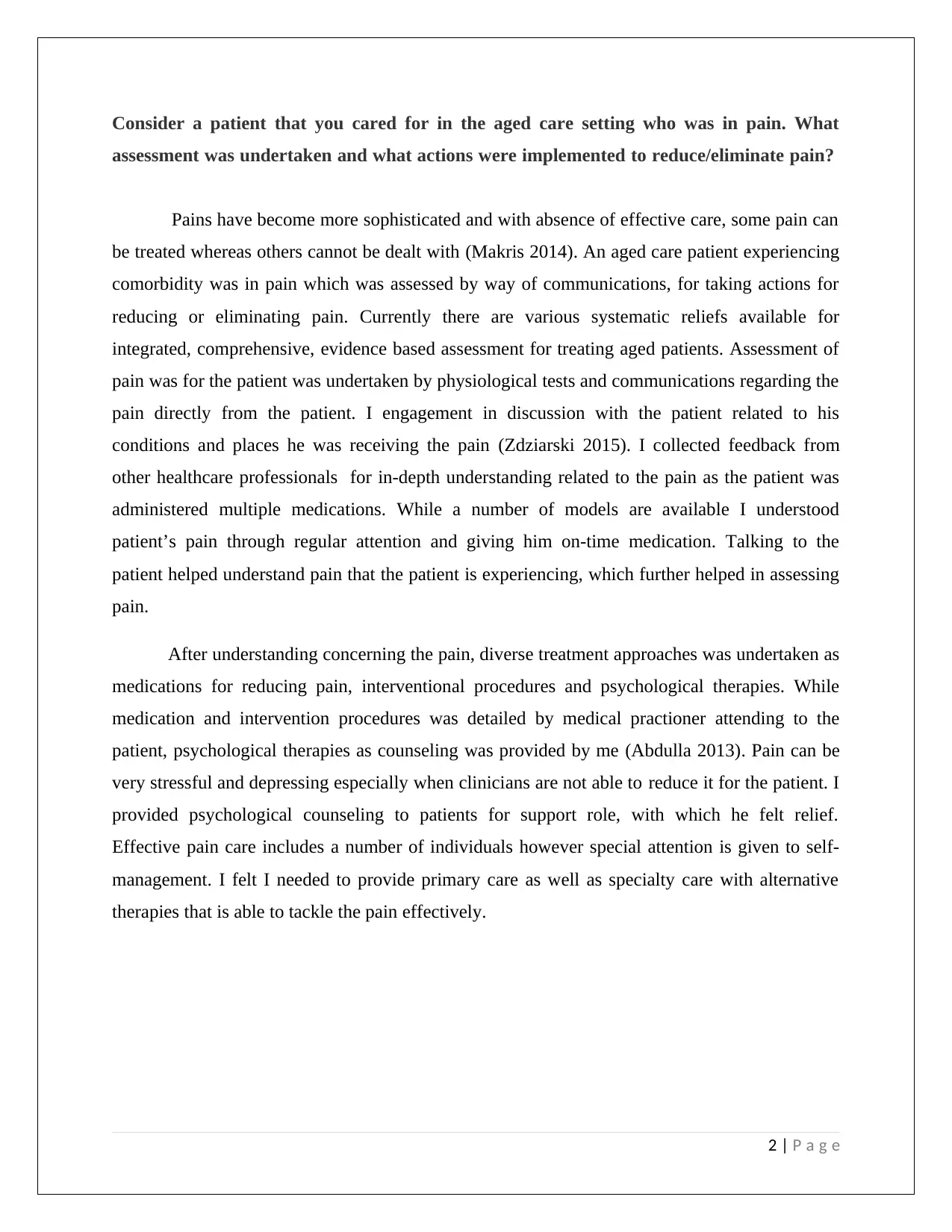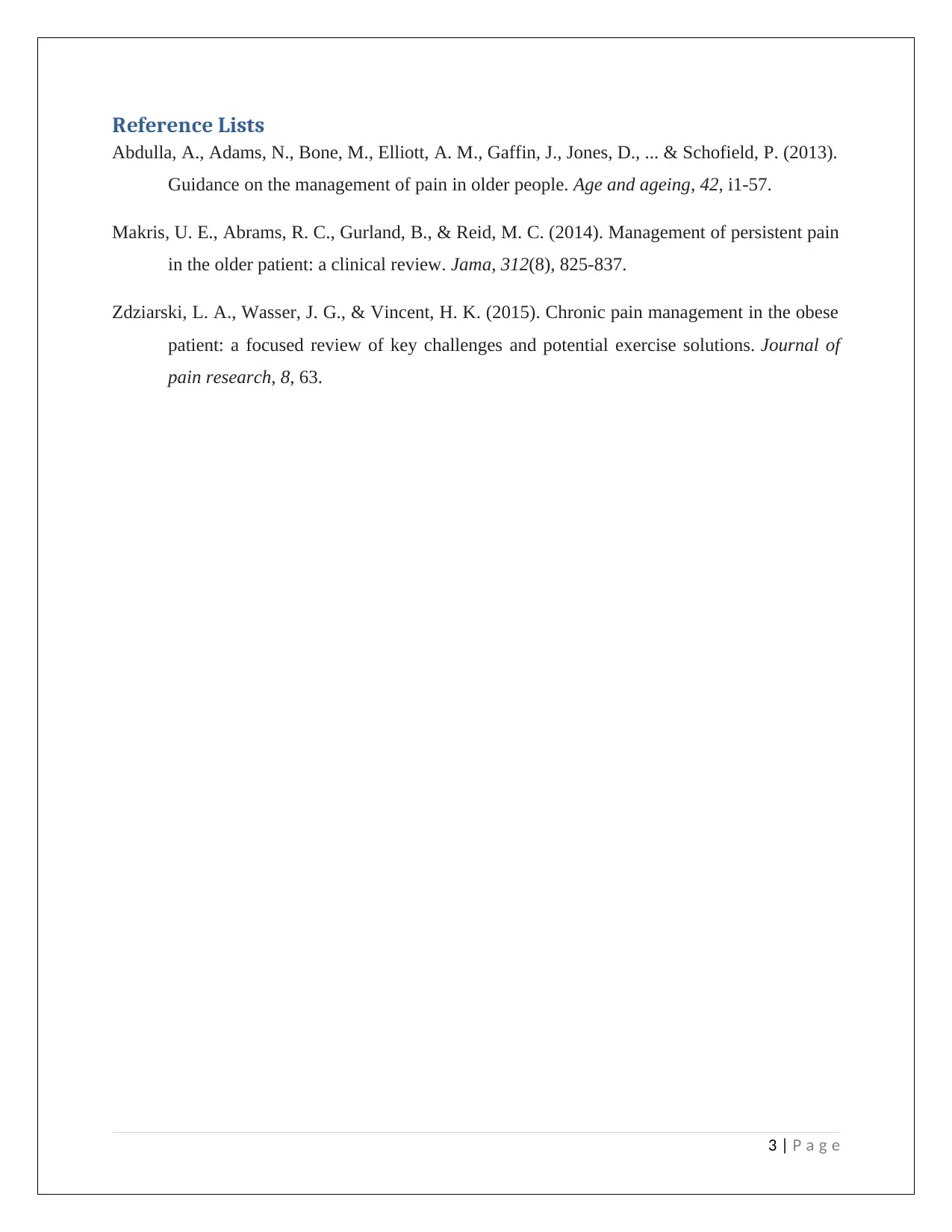Analysis of Pain Management Strategies in Aged Care: A Case Study
VerifiedAdded on 2023/06/14
|3
|514
|157
Case Study
AI Summary
This case study explores the pain management strategies employed for an aged care patient experiencing comorbidity-related pain. The assessment involved direct communication with the patient to understand the location and nature of the pain, supplemented by feedback from other healthcare professionals due to the patient's multiple medications. Treatment approaches included medications, interventional procedures, and psychological therapies such as counseling, with a strong emphasis on self-management and providing both primary and specialty care. The case highlights the importance of psychological support in alleviating stress and depression associated with chronic pain, emphasizing a comprehensive and integrated approach to patient care. The solution also references guidelines on managing pain in older people.
1 out of 3









![[object Object]](/_next/static/media/star-bottom.7253800d.svg)